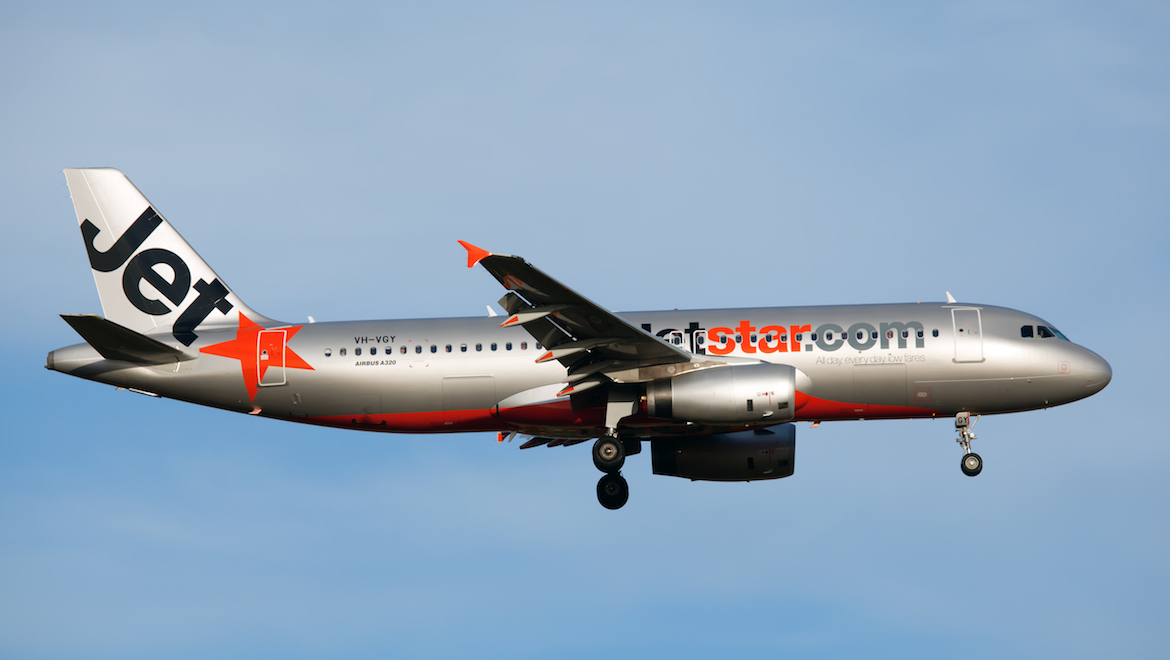
A Jetstar Airbus A320 with 128 passengers and six crew on board descended into Christchurch Airport below a minimum safe altitude, an accident investigation has found.
The incident occurred on August 6 2017, when the A320 VH-VGY flying from Wellington to Christchurch inadvertently descended below the 2,500ft minimum safe altitude for part of the arrival procedure before landing safely.
The final report from the New Zealand Transport Accident Investigation Commission (TAIC) published on Thursday found the crew did not maintain “adequate situational awareness” of the aircraft’s location in relation to the standard arrival route.
Further, it said Jetstar’s procedures did not encourage the appropriate use of the Airbus A320’s automated navigation systems.
The report said the pilot and first officer opted for “open descent” procedure rather than the available, fully automated “managed descent” mode.
“By not setting the flight control unit to the next altitude restriction, a higher level of human intervention was required to keep the plane within permissible limits on the arrival route,” the TAIC final report said.
Approach occurrence
After being cleared for arrival by Christchurch air traffic control, the crew loaded the standard arrival route and the expected approach into the aircraft’s flight management guidance system (FMGS) and conducted a briefing for the arrival, approach and landing, the TAIC report said.
The standard arrival route included a number of altitude restrictions to provide a safe clearance above terrain and other features, such as noise abatement, to ensure efficient traffic flows.
“On the approach the First Officer informed the Captain of his intention to delay the descent slightly in order to fly a continuous descent at idle engine thrust. Normally this would have allowed the aircraft to meet all the ‘at or above’ altitude restrictions of the standard arrival route,” the final report said.
To initiate the descent, the First Officer selected “open descent” mode. In this situation, the aircraft is still flown by the autopilot, but the pilot manually controls the vertical (altitude) component of the flight path.
In this situation, the pilot was required to ensure the aircraft complied with the altitude restrictions for the standard arrival route, while the autopilot ensured that the A320 followed the pre-programmed lateral navigation component of the FMGS.
The aircraft was required to remain above 3,000ft after the waypoint GOMPI. Also, the Christchurch standard arrival route included a minimum safe altitude of 2,500ft between waypoint GOMPI and a previous waypoint GUKAM.
However, TAIC report said the A320 was descending through 2,300ft as it approached GOMPI and eventually passed that waypoint at 2,000ft.
The TAIC report said there was “nothing wrong with following such an arrival procedure using the open descent mode”.
However, it said the aircraft automation in managed descent mode provided an important defence against aircraft descending below minima.
“A key lesson arising from the inquiry is that properly used automated flight navigation systems will reduce the crew workload and result in safer flight operations,” the final report said.
“If crew choose not to use them, they must maintain a heightened level of alertness and work harder to achieve an equivalent level of situational awareness.”
The TAIC report said Jetstar has issued a Flight Standing Order in February 2018 that included a “revised procedure for flight-path monitoring and discussed such topics as pilot duties, monitoring and communication” as part of its internal report into the incident.
Jetstar also provided its training and check staff with further information and discussion on the subject.
“The operator also advised that on 1 October 2018 it had transitioned its flight crew training to evidence-based training,” the TAIC report said. “Evidence-based training recognises that most occurrences have an element of reduced situational awareness and can be effective in improving the defences against this human condition.
“Evidence-based training moves away from scripted simulator training programmes to unknown-scenario-based activities that focus on problem-solving, crew resource management, threat and error management and resilience.”
The Christchurch-based First Officer, who flew regularly between Christchurch and Wellington, was the pilot flying when the incident occurred. He had accrued a total of 5,620 flying hours, including 680 hours on the A320.
The Melbourne-based Captain had been flying Airbus aircraft for Jetstar since 2005 and had about 32,000 flying hours, including about 8,000 hours on the A320. He was familiar with flying between Australia and New Zealand, but had not flown domestically within New Zealand for several years and had arrived in Christchurch the previous day, the TAIC final report said.
The accident investigator also found the air traffic controller failed to follow the required procedure.
“An air traffic controller observed the aeroplane’s descent below the minimum safe altitude, but did not follow the required procedures and alert the flight crew until the aeroplane had landed,” the final report said.
Because the A320 was registered in Australia, the occurrence was notified to the Australian Transport Safety Bureau (ATSB). It then notified TAIC.
The ATSB identified “mode awareness” in a similar incident with a Jetstar plane landing at Queenstown Airport in July 2012.
The full report can be read on the TAIC website.










